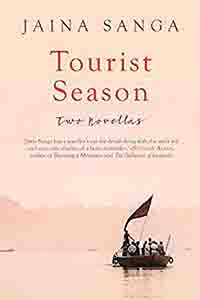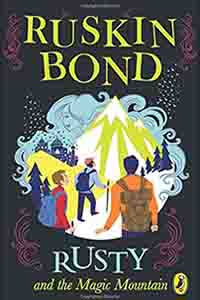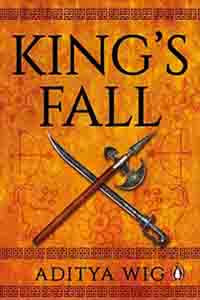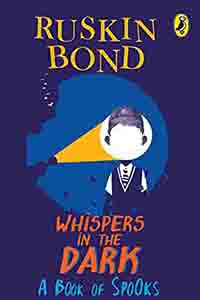“A compelling duet of novellas, in exquisite prose, that capture the nuances of time and place, each one featuring a protagonist who is at heart a dreamer.”
NO MAJOR SPOILERS
The two novellas are about two dreaming men with no women in their lives who suddenly find everything turned topsy turvy by an encounter with a woman. One story is set in Mussoorie while the other meanders with the Ganga from Varanasi through Allahabad to Hardwar. Though the stories are not travelogues in any accepted sense, they would not exist without the detailed backdrops that Sangha sketches out – the monkeys that hold the Mussoorie shopkeepers ransom for example and the small shops that make up the small town, or the steep ghat steps of Varanasi that send Girnar toppling out of his dreams. Both Ramchander and Girnar cannot imagine a life away from what they know. In Ramchander’s case his ramshackle shop and in Girnar’s the mythological studies that circle around the river.

The two women who are agents of change are very different, though each is independent and professional. Sonali lives in Mumbai and Mrs Morrison in London. One delves into antiques; the other is bent on exposing the pollution that flows into the Ganga. Both are outsiders and their viewpoint, that of the tourist, changes the perspectives of the men they meet. Ramchander and Girnar are forced to look outwards to explore the worlds they thought they knew and reach some kind of conclusion about where their lives will take them next. Girnar completes his pilgrimage and Ramchander realizes that it may be time for him to leave his old home town because the monkeys have destroyed more than the shops around him. One would have expected the women rather than the men to be the heart of the story but Sangha chooses to give her tales that particular masculine twist – even though her protagonists are far from macho, just quiet every day people from small towns.
Sangha details the types of people who throng to these places, tourists in both, the funeral rites and the petals floating in the water, or the Tibetan women and the tea stall owners in Mussoorie where the hills curve like a monkey’s tail. At the heart of Sangha’s novellas is a kind of EM Forster-ness the booming of the Marabar Caves expressed in the monkey trapping expedition in Mussoorie for one or in the crowds that throng the ghats of the filthy, sacred river. The stories are quiet but the incidents occur like stones thrown suddenly, silently into water creating a ripple effect. And if Venice is a character in Mann’s novel, so are Mussoorie and Varanasi as much so in these novellas.
Reviewed by:
Anjana Basu
Added 6th May 2017




